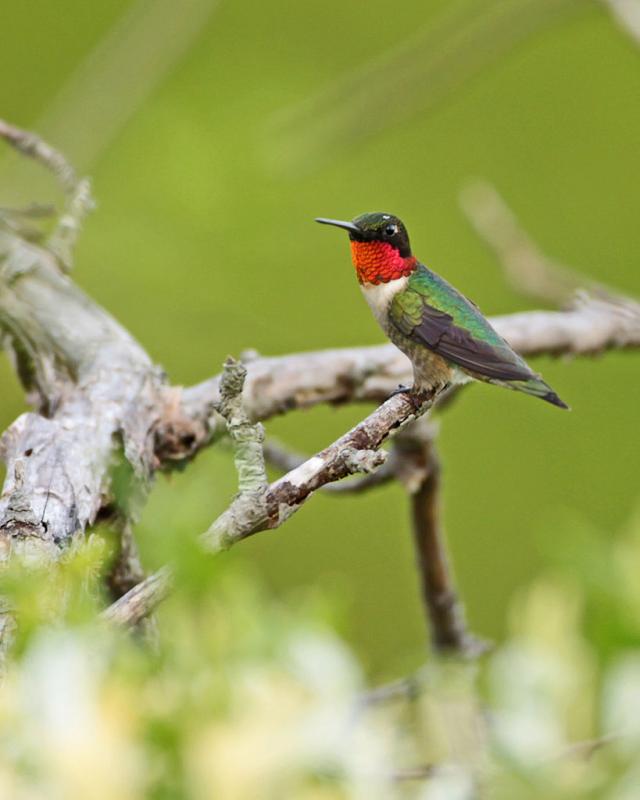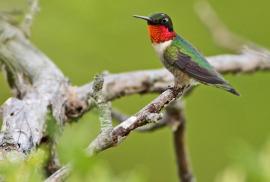Guide to Boreal Birds
Overview
These diminutive birds are particularly attracted to tubular red flowers such as salvia and trumpet creeper, as well as bee balm, petunia, jewelweed, and thistle. Hummers are also attracted to artificial feeders-red glass tubes filled with sweet liquid. With their remarkable powers of flight, they are the only birds that can fly backward as well as hover in one spot like insects. They are constantly in motion, perching on twigs or wires only briefly to rest and to survey their surroundings, or when they are at the nest. During courtship, the female sits quietly on a perch while the male displays in a pendulum dance, swinging in a wide arc and buzzing loudly with each dip.
Description
3 1/2" (9 cm). Tiny. Needle-like bill. Metallic green above, white below; male has brilliant, iridescent red throat. Immature male lacks red throat. Female green above, with white throat and breast, buff sides, and white-tipped outer tail feathers.
Voice
Mouse-like, twittering squeaks.
Nesting
2 white eggs in a woven nest of plant down held together with spider silk and covered with lichens. Nest is saddled to the branch of a tree, usually in a forest clearing.
Habitat
Suburban gardens, parks, and woodlands.
Range/Migration
Although this common and popular bird is found throughout the eastern states in the warmer months, the nature of its migration is poorly documented. Ruby-throated Hummingbirds spend the winter along the west coast of Mexico and through Central America to Costa Rica. They frequent tropical deciduous forests and lowland scrub and are common in the extensive citrus groves of Belize.
Spring migration involves several different routes: Some individuals travel north along the east coast of Mexico, while others migrate across the Gulf of Mexico, presumably departing from the Yucatan Peninsula. Large numbers have been observed flying low over wave tops off the coasts of Louisiana and Texas. Males appear along the U.S. Gulf coast in late February, 8 to 10 days ahead of the females. The timing of northward movements is variable and appears to depend on the blooming of favored nectar plants along the way. In the extreme north, the arrival of the hummingbirds may be timed to follow the migration of Yellow-bellied Sapsuckers. These woodpeckers open sap wells that may be crucial food sources for Ruby-throats in the absence of floral nectar.
The only hummingbird that breeds east of Mississippi River. Breeds from southern Canada to Gulf Coast. Winters mainly in tropics, rarely on Gulf Coast.



